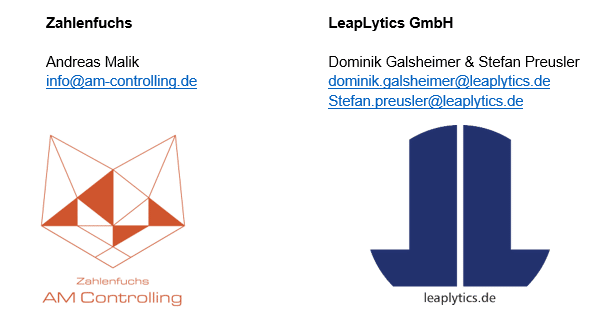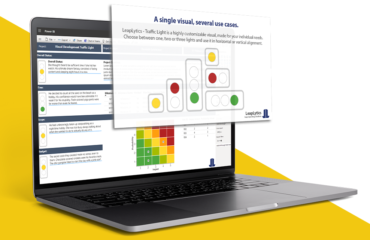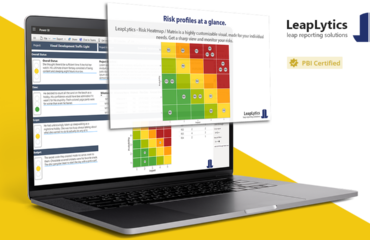Those who know the future are ahead of the game! Read in our 3-part article why Business Intelligence is especially relevant for small and medium-sized enterprises (SMEs), how challenging actually the first step is, but what are also essential advantages and how you can approach the whole topic efficiently. The SME expert for controlling and management Andreas Malik as well as the business intelligence specialists and founders of one of the leading providers of data visualizations and dashboards in the field of Power BI and Qlik Sense, Stefan Preusler and Dominik Galsheimer, will guide you through these 3 exciting parts of the article series with their experiences and expert knowledge. In the first part, we look at why Business Intelligence and SMEs go well together. The second part deals with clearly identifying advantages and thus finding the right point time to start it. The third part then shows you important first steps for implementation and introduction
Part 1: Why BI and SMEs go well together
In times of crises, war and ever more rapid changes in the business environment, it is important for companies to react at an early stage.
In order to master these challenges, it is necessary to analyze data on all business processes in order to summarize them in a meaningful way and to keep the time required for the preparation of decision-relevant information as low as possible. This task is performed by so-called Business Intelligence (BI). BI is a collective term for methods and processes for the systematic analysis of data.
Until a few years ago, BI was reserved for large companies. Especially under the aspect of the high costs for BI solutions, Business Intelligence was not interesting for medium-sized businesses. But in the meantime, BI has also arrived at small and medium-sized enterprises (SMEs). But hHow are these SMEs defined?
For most very small enterprises (EU definition <10 employees turnover < 2 million EUR p.a.) the data model is manageable and is mapped with MS-Excel. Here, selected basic values and key figures are often sufficient for monthly variance analysis. The presentation is done on one DIN-A4 page with profit/loss statement, balance sheet and liquidity data. In addition, information on the order situation, productivity (or capacity utilization) and general market events is presented.
In small companies (10 – 50 employees, sales of EUR 2 – 10 million p.a.), the controlling system is somewhat more extensive. In addition to more key figures and variance analyses, there is usually also a preview/forecast.
In the case of medium-sized companies (50 – 250 employees, sales of EUR 10 – 50 million p.a.), information relevant to the future is also taken into account in addition to detailed values, key figures and analyses. Whereby the focus is on a balanced and clear information density.
BI solutions are not off-the-shelf systems; they are set up individually for the company (customizing). It is designed taking into account the respective requirements of the company. Careful design is crucial for the benefits and practicality of a BI system.
The conception of BI or “Which analysis can the customer see in his cockpit?”
- In the first step, the company-specific goal of the future BI should be defined. For this purpose, the entrepreneur/controller must formulate which key figures and evaluations he wants to have in the end.
- In the next step, these requirements are refined and concretized. 3.
- In order to obtain the key figures/information, it must be examined which data is already available and which is still required. Data sources must be clarified.
- The reporting system is designed on the basis of the previously defined key figures and analyses.
- Link relevant data from various sources (setting up data warehouse).
- Linking of the data basis with the desired reporting system.
- Result: company-specific cockpit
A BI system versus Excel, or “When do I switch from Excel to a BI system?”
With MS-Excel you can make many analysis nowadays and create small automations (VBA macros). The advantages are that it is available in every company, can be implemented quickly and is also cheap.
- As a very small enterprises, this is usually enough. Here it can make sense to determine with the help of a controlling expert whether these evaluations are sufficient to successfully manage the company.
- As a small company, Excel-based evaluations for corporate management quickly reach their limits. The high manual expenses are error-prone, time-consuming and one-dimensional. At this point it makes sense to look into the advantages of BI. The easiest way is to arrange a non-binding consultation.
- As a medium-sized company, it is essential to have a BI system in order to operate successfully as a business. With a purely MS-Excel based system you waste a lot of time and money.
Part two of the article series will be published next week. Here you can read why determining the right time to introduce BI is challenging and how you can master this task.
For further question, we stay at your disposal:








